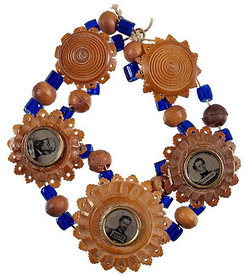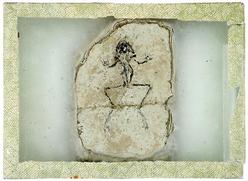Aside from digital photography, there likely has been no greater innovation to the antiques marketplace in the 21st century than the online auction. In its relatively short life, just over ten years, the online auction has gone from being a novelty to being absolutely essential to the trade in antiques, art, and collectibles.
Most everyone is well acquainted with eBay, the personal auction site that has, since the mid-1990s, allowed individuals to buy and sell everything from weathervanes to Pez dispensers to vintage Indian motorcycles. However, in what now seems a distant memory, eBay was the driving force in bringing the online auction to the traditional antiques trade. Between 2002 and 2008, eBay, at first partnering directly with brick-and-mortar auction houses, and then later utilizing intermediaries Live Auctioneers and ArtFact, brought millions of lots to a global bidding platform. It no longer mattered whether you were in Massachusetts, Ohio, Wyoming, or even London or Tokyo, you could bid on, and buy, items being sold at auction houses around the world.
When, in 2008, eBay announced that it would be closing its virtual saleroom to traditional live auctions, the marketplace nearly panicked. Smaller and regional auction houses had grown substantially based the reach that eBay provided them. The panic quickly subsided, however, when Live Auctioneers and ArtFact assured both buyers and sellers that they could step in and provide a bidding platform that would rival that of eBay. By mid-2009, the marketplace had relaxed—both companies had built virtual salerooms and most auction houses saw very little reduction in their internet bidding.
Online bidding has become such a mainstay in the antiques marketplace, and in fact, such a critical aspect of it, that more recently, many traditional auction houses have abandoned their physical saleroom, in whole or in part, and now hold “online only” auctions. Additionally, new auction companies have formed that exist solely in the virtual world.
There are two primary types of online auctions: a traditional “live” auction with real-time bidding, and a timed-bidding auction when bidding is scheduled to end at a specific time. In a live online auction, internet bidding is typically one component of the auction (which generally includes a saleroom full of bidders, and others bidding via absentee and telephone bids), though some auction houses are holding auctions that function like traditional live auctions, but internet bidding is the only method of participating. In this type of live auction, the internet bidder, most often working through ArtFact or LiveAuctioneers, can leave absentee bids online or bid during the auction by clicking on a “Bid” button during the sale of each lot. Here, a member of the auction house staff is stationed in the saleroom, relaying bids from the internet to the auctioneer, who opens and closes each lot in the traditional manner.
Most frequently, auction houses wishing to hold online auctions, choose the timed-bidding format. In these auctions, bidding is open for a set period of time, typically a week or more, and then bidding closes at a set time. In most cases, either individual lots or groups of lots, end at predetermined times, usually a few minutes apart. For example, lots 1-10 may close at 8:00 pm, with lots 11-20 closing at 8:05, lots 21-30 at 8:10, etc., until all the lots are closed. With pre-determined ending times, much like on eBay, bidders will be competing with “snipers.” Snipers are those who attempt to get their bid placed in the final few seconds of the auction, thereby preventing anyone else from outbidding them. To counter this, many timed-bidding auctions employ a system where a bid placed in the final moments keeps the lot open until a set period of time (sometimes thirty seconds, a minute, or five minutes) has elapsed with no bids. In timed-bidding auctions, the opening and closing of lots is done entirely by the computer software—no human auctioneer is required.
Whether sitting at home in front of the television with a laptop, or sitting under a tree in a park with a smartphone, ever-advancing technology is making bidding at auction easier than ever. The internet has profoundly changed the antiques and art marketplace, and although it is unlikely that traditional live auctions will ever disappear, online auctions will likely become the preferred method to sell more and more categories of antiques.
Prices4Antiques.com has always covered live auctions with an online component—it’s hard to find auction that aren’t online these days—and as online only auctions are becoming an increasingly important segment of the auction marketplace, Prices4Antiques.com will cover many of those too.
Some auction houses have utilized the online only format to expand their auctions of some categories (American Indian art, militaria, historical ephemera) to include lower-valued examples. Other auction houses often use the online only format to expand their offerings into new categories (movie posters, antique stock certificates, sports memorabilia). In either case, these auctions allow Prices4Antiques.com a great opportunity to add both more breadth and depth to the database.
 For the Fourth of July, Uncle Sam puts in an appearance right along with parades and fireworks. There was a time when he was far more ubiquitous, and many people are unaware of his remarkable journey from government contractor to American icon! When the U.S. was entrenched in the War of 1812, Samuel Wilson, a small-town meat-packing magnate from Troy, New York, obtained a government contract to supply troops in the northern parts of the country. Barrels of salt beef marked “U.S.” were shipped to the troops, who began to joke that the initials really stood for “Uncle Sam.” Of course, many military-issued supplies were marked in this manner, and before long, soldiers were joking about getting presents from Uncle Sam when each shipment arrived.Uncle Sam may have gotten his name in 1812, but it took forty years for someone to bring him to life in an illustration; this illustration must have captured the imagination of thousands of Americans, as Sam soon began to appear everywhere! Folk artists were among the first to pick up Uncle Sam’s image, but the familiar bearded visage has also been used to market everything from tobacco to candy (whilst inexplicably riding a rabbit) to paint. My personal favorite is this cutout of Uncle Sam, who seems to have abandoned his coat and tails in order to shill for OshKosh overalls.
For the Fourth of July, Uncle Sam puts in an appearance right along with parades and fireworks. There was a time when he was far more ubiquitous, and many people are unaware of his remarkable journey from government contractor to American icon! When the U.S. was entrenched in the War of 1812, Samuel Wilson, a small-town meat-packing magnate from Troy, New York, obtained a government contract to supply troops in the northern parts of the country. Barrels of salt beef marked “U.S.” were shipped to the troops, who began to joke that the initials really stood for “Uncle Sam.” Of course, many military-issued supplies were marked in this manner, and before long, soldiers were joking about getting presents from Uncle Sam when each shipment arrived.Uncle Sam may have gotten his name in 1812, but it took forty years for someone to bring him to life in an illustration; this illustration must have captured the imagination of thousands of Americans, as Sam soon began to appear everywhere! Folk artists were among the first to pick up Uncle Sam’s image, but the familiar bearded visage has also been used to market everything from tobacco to candy (whilst inexplicably riding a rabbit) to paint. My personal favorite is this cutout of Uncle Sam, who seems to have abandoned his coat and tails in order to shill for OshKosh overalls.




